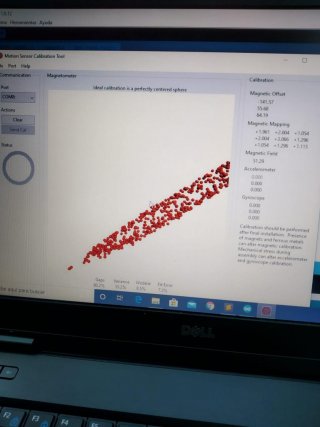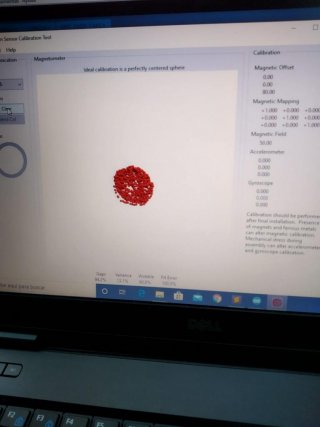Hi,
I have a problem when implementing an artificial horizon and a compass with the teesy Prop Shield.
I am using a Teensy 3.2 together with Propshield with the last arduino ide, 1.8.12 and the last teensyduino 1.51.
I do a calibration with the official libraries and MotionCalc obtaining values <2%.
In static, that is, at home, I try on a paper with divisions every 45º and turning the propshield on these marks gives me a very acceptable heading value.
When I test in my car these values do not stop varying and start making weird movements.
I have tried to calibrate in the same car thinking that there could be magnetic interference, but I have not succeeded.
I would like to know if you can help me with something I am not considering or if you have a possible solution.
I thought that if an imu of this type can fly a drone, which "a priori" is more unstable and gives good heading values, why will not be able to be used as an aid in an uncertified, experimental aircraft?
Thank you very much and I await your comments.
Sorry for English as it is not my mother language.
I have a problem when implementing an artificial horizon and a compass with the teesy Prop Shield.
I am using a Teensy 3.2 together with Propshield with the last arduino ide, 1.8.12 and the last teensyduino 1.51.
I do a calibration with the official libraries and MotionCalc obtaining values <2%.
In static, that is, at home, I try on a paper with divisions every 45º and turning the propshield on these marks gives me a very acceptable heading value.
When I test in my car these values do not stop varying and start making weird movements.
I have tried to calibrate in the same car thinking that there could be magnetic interference, but I have not succeeded.
I would like to know if you can help me with something I am not considering or if you have a possible solution.
I thought that if an imu of this type can fly a drone, which "a priori" is more unstable and gives good heading values, why will not be able to be used as an aid in an uncertified, experimental aircraft?
Thank you very much and I await your comments.
Sorry for English as it is not my mother language.




